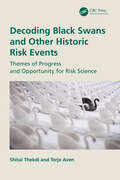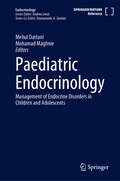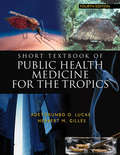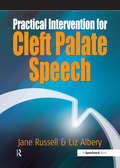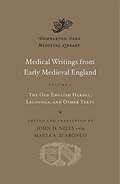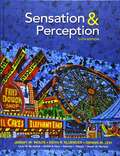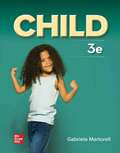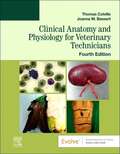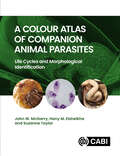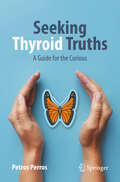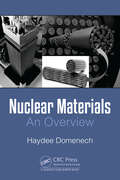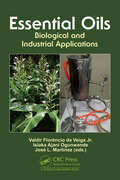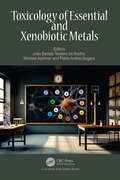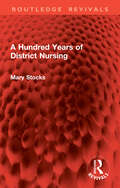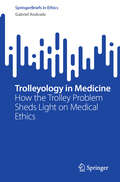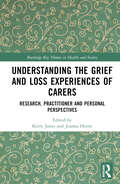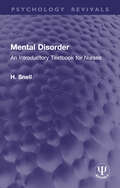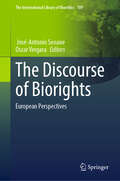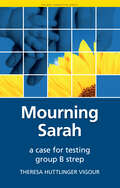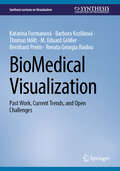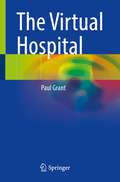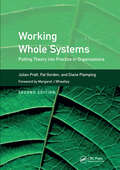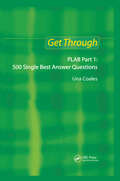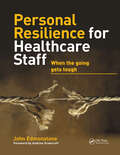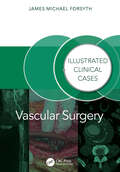- Table View
- List View
Decoding Black Swans and Other Historic Risk Events: Themes of Progress and Opportunity for Risk Science
by Terje Aven Shital ThekdiThe field of risk science continues to learn from the long history of events to develop principles and practices that enable individuals, organizations, and societies to understand and manage future risk. Reflecting on these histories reminds us that risk and uncertainty are prevalent, yet it remains important to consider what is on the horizon: the possibility of future events, the consequences of those events, our vulnerability to those events, and how to recover from those events.Decoding Black Swans and Other Historic Risk Events offers a guide to understanding risk events and how to act before they occur. This book explores past risk events and analyzes how risk science principles apply to those events and studies whether current risk science concepts and approaches could potentially have avoided, reduced the impact, or supported recovery following the risk event. New insights are obtained by applying recent research progress in understanding and managing risk, considering aspects including quality of evidence, information, and misinformation in risk studies. The analysis results are used to identify how risk science approaches contribute to the overall management of risk and societal safety, and where improvements can be obtained, allowing the reader to possess a toolkit for identifying and planning for unsafe events.This title will be a critical read for professionals in the fields of occupational health and safety, risk management, civil engineering, mechanical engineering, energy, marine engineering, environmental engineering, business and management, and healthcare.
Paediatric Endocrinology: Management of Endocrine Disorders in Children and Adolescents (Endocrinology)
by Mehul Dattani Mohamad MaghniePediatric Endocrinology covers all of the main aspects of translational endocrinology and clinical practice, making it an ideal resource for both paediatricians and endocrinologists. The book emphasizes the newer translational aspects of the topics covered, as well as molecular advances in diagnosis and therapy, although clinical relevance, with a particular focus on evidence-based clinical management, remains paramount. Further, transitions from childhood to adolescence and adulthood are discussed wherever appropriate. Written by a combination of respected and emerging experts in the field, this book is intended to serve as a major reference work for pediatric endocrinologists at all stages of their careers, as well as general pediatricians with an interest in endocrinology and diabetes, and endocrinologists in adult practice who may also treat children and adolescents. The book is part of the SpringerReference program, which provides access to ‘living editions’ thatare constantly updated using a dynamic peer-review publishing process.
Short Textbook of Public Health Medicine for the Tropics, 4Ed
by Adetokunbo Lucas Herbert GillesFirst published in 1973, Short Textbook of Public Health Medicine for the Tropics, Fourth Edition was designed to provide medical students and other trainees with an introduction to the principles of public health with special reference to the situation in developing countries of the tropics.Rather than attempting to provide a detailed comprehensiv
Practical Intervention for Cleft Palate Speech
by Jane Russell Liz AlberyA Speechmark core resource, this photocopiable manual provides practical ideas and material for speech and language therapists to use with clients whose speech difficulties arise from cleft palate and/or velopharyngeal disorders. This book enables therapists in the community to feel confident in dealing with the specific problems that cleft palate speech can bring, even if they have no experience of working with this client group. The therapy ideas can be used flexibly and are designed to cover all age-groups: pre-school, school-age and adult. The suggestions presented in this book help to determine the best approach for each client.
Medical Writings from Early Medieval England Volume I
by John D. Niles Maria A. D'AroncoMedical Writings from Early Medieval England : The Old English Herbal, Lacnunga, and Other Texts -Language: old_english
Sensation and Perception
by Rachel Herz Roberta Klatzky Linda Bartoshuk Jeremy Wolfe Keith Kluender Dennis Levi Daniel MerfeldSensation & Perception, Sixth Edition, introduces students to their own senses, emphasizing human sensory and perceptual experience and the basic neuroscientific underpinnings of that experience. The authors, specialists in their respective domains, strive to spread their enthusiasm for fundamental questions about the human senses and the impact that answers to those questions can have on medical and societal issues.
Child
by Gabriela MartorellChild, Third Edition, is a brief but thorough account of human development from conception through adolescence, exposing students to substantial amounts of culture and diversity and immersing them in practical application. Child combines a commitment to scholarly content, critical thinking, and real-life application of theory with a visually engaging and dynamic, interactive format.
Clinical Anatomy and Physiology for Veterinary Technicians
by Joanna M. Bassert Thomas P. ColvilleStart your veterinary technician education off on the right foot with Clinical Anatomy and Physiology for Veterinary Technicians, 4th Edition. Combining expert clinical coverage with engaging writing and vivid illustrations, this popular text is the key to understanding the anatomic and physiologic principles that will carry you throughout your career. In addition to its comprehensive coverage of the diverse ways in which animal bodies function at both the systemic and cellular levels, this textbook features a variety of helpful application boxes, vocabulary lists, and Test Yourself questions in every chapter to ensure you have a firm grasp of anatomic structure and its relevance to clinical practice.
A Colour Atlas of Companion Animal Parasites: Life Cycles and Morphological Identification
by John McGarry Hany Elsheikha Suzanne TaylorA Colour Atlas of Companion Animal Parasites: Life Cycles and Morphological Identification illustrates how to identify common parasites of dogs, cats and horses using simple morphological features. It presents parasite life cycles in straightforward, accurate terms, and covers: - the general features of major arthropods, helminths and protozoa of dogs, cats and horses; - morphological identification of both adult parasites and their immature stages in tissues, with particular consideration given to differential identification; - major parasites of companion animals which may shift regions because of climate change, animal movement and other anthropogenic factors. Parasite identification is fundamental, not only for planning treatment, prevention and management of parasitic disease, but also for surveillance of invasive exotic parasites and for monitoring the spread of endemic species. With 600 parasite specimens photographed and annotated as a quick reference resource, this book mirrors what a practitioner might view down a microscope, bringing the subject alive. It forms a complete and practical resource for all veterinary students, veterinarians, and anyone interested in parasite control.
Seeking Thyroid Truths: A Guide for the Curious (Copernicus Books)
by Petros PerrosThis book is for patients with thyroid diseases and anyone interested in the thyroid, including carers of thyroid patients, members of the lay public and healthcare workers who deal with thyroid patients. The intention is to provide the means by which good quality information about the thyroid gland and its diseases can be found, accessed, weighed and judged for scientific merit. The book can be read like a story, but can also serve readers as a reference manual when looking for information on a thyroid-related topic. Thyroid diseases affect 10% of the population. People with thyroid problems, their family, carers and health professionals often seek information. The available sources are disappointing and misleading. There is an unmet need and a desire by patients, the lay public, students and early career healthcare workers to learn how to access and appraise the evidence, which is rarely fulfilled by existing resources. The book consists of two parts. Part One contains six chapters. The first Chapter (“Obstacles to seeking the truth”) discusses the common hurdles that can come between us and the knowledge we seek. Chapter Two (“Thyroid basics”) is an overview of the structure and function of the thyroid gland and the common diseases that affect it, narrated through the convoluted history of discoveries relating to the thyroid. In Chapter Three (“What is the evidence”) evidence-based medicine is discussed, how different medical publications are classified, the processes involved in publishing medical papers and how they are structured. This is relevant and important in understanding the selection process in play that a piece of academic work is subjected to before it reaches its readers, how it varies and how it may correlate with the quality of the end product. Chapter Four (‘Mining the truth’) is about conducting searches. It identifies appropriate search engines and gives tips on how to stay on course. Chapter Five (“Appraising the evidence”) outlines how to judge the quality of published papers based on checklists. Chapter Six (“Interpreting the evidence”) will help extract the meaning of a piece of research. Part Two (“What is the optimal range?”) is an example of a common question asked by patients with hypothyroidism (the commonest thyroid condition). It will reveal a truth that should be making headlines and attracting the attention of patient advocates, thyroid specialists, their professional organisations and the public at large. Yet all relevant parties seem to choose to ignore it and channel their energies in other directions. It is an example of good science yielding valuable knowledge, which is undermined and made worthless by poor implementation. Herein lies the most important message of this book: seeking truth and getting close to it is not enough, how it is used to change the lives of patients is what really matters. Relevant references are included at the end of each chapter to indicate the sources in case the reader wishes to access them.
Nuclear Materials: An Overview
by Haydee DomenechThis book reviews the critical scope of nuclear materials, which play an essential role in decreasing greenhouse gas emissions. It traces historical landmarks from the years preceding World War II to the atomic bomb era. Key topics covered include the concept of nuclear materials and their connection to the Non-Proliferation Treaty (NPT), the steps of the nuclear fuel cycle, and advanced reactor technologies. Additionally, the book addresses safety and security considerations, including radioactive waste and spent fuel management. Through this comprehensive exploration, readers can gain insights into the intricate world of nuclear materials, their impact on global security, and the path toward sustainable energy solutions.
Essential Oils: Biological and Industrial Applications
by José L. Martinez Isiaka Ajani Ogunwande Valdir Florêncio da VeigaEssential oils, renowned for their multifaceted properties, have been integral to the tapestry of human history, forging connections to our past by evoking memories of cherished places and the aromatic embrace of grandparents' kitchens. Beyond their nostalgic allure, these oils play a pivotal role in various industries, serving as functional compounds in food matrices, packaging, preservatives, and essential elements in plant protection—ranging from pesticides to antimicrobials and repellents. This book unfolds in ten chapters, presenting a collection of groundbreaking studies on the composition, biological, and pharmacological properties of essential oils. Collaborative efforts from multidisciplinary groups across the globe, including Brazil, Chile, Vietnam, Nigeria, and the Southeast Asian Region, converge to offer a diverse and innovative perspective on the subject. Delving into the intricate world of essential oils, this book encapsulates a wealth of knowledge that transcends geographical boundaries, providing valuable insights regarding the global impact and applications of these extraordinary natural compounds.
Toxicology of Essential and Xenobiotic Metals
by Michael Aschner João Batista Teixeira da Rocha Pablo Andrei NogaraThis book explores how metals like cadmium, mercury, lead, aluminium, manganese, and chromium can harm our health, whether through short-term or long-term exposure. It covers symptoms ranging from immediate nausea to long-term issues like Parkinson's and Alzheimer's diseases. Understanding how these metals interact with our bodies is crucial for identifying their harmful effects. The book, divided into 11 chapters, provides straightforward explanations about how these metals affect our health, making it useful for anyone interested in understanding how metals can impact the environment as well as human and animal health.
A Hundred Years of District Nursing (Routledge Revivals)
by Mary StocksOriginally published in 1960, this is a graphic and humorous story of district nursing from its beginning, with the first nurse engaged to work in the slums of nineteenth-century Liverpool, up to the time of publication. Mrs Stocks records how ‘our nurse’ had been and still was a familiar and beloved figure in busy cities and remote rural areas throughout the United Kingdom and was rapidly assuming a similar position in many other parts of the world.William Rathbone of Liverpool early recognized the need for a central organization to recruit and train district nurses and became the father of the Queen Victoria Jubilee Institute for Nurses, or as it became, the Queen’s Institute of District Nursing (now Queen’s Institute of Nursing). The background of its formation gives a fascinating glimpse of different classes of Victorian England. Mrs Stocks describes how Queen Victoria, the Institute’s first Patron, conveyed her wishes to the ‘top people’ who devised and organized the service with the inflexible guidance of Florence Nightingale. At the other end of the scale, she tells of some of the appalling conditions found in the homes by the pioneer nurses. She describes how the Queen’s Institute grew from strength to strength in spite of buffeting by high political winds, until at the time it played an important part in preserving the nation’s health. Today it is a registered charity dedicated to improving the nursing care of people in the home and community.
Trolleyology in Medicine: How the Trolley Problem Sheds Light on Medical Ethics (SpringerBriefs in Ethics)
by Gabriel AndradeThis book provides an overview of how the intricacies of the Trolley Problem shed light on various aspects of medical ethics. It shows how trolley dilemmas have become useful to ethicists to the extent that they activate intuitions and provide guidance about what the relevant moral principle ought to be in judging specific actions. Issues are covered at length such as euthanasia, where it is important to determine a relevant difference between killing and letting die; and abortion, where it is necessary to establish if harms can be used as a means to an end. While specialists in medical ethics have argued about these topics at length, few have established connections with the complexities of trolley cases. The Trolley Problem has now become a staple of pop culture and yet, outside philosophy, few people understand its implications. Consequently, this book is of interest to those with a general interest in philosophy, students, researchers as well as those in the healthcare industry where many of the difficult moral decisions encountered are better informed by framing them around the intricacies of the Trolley Problem.
Understanding the Grief and Loss Experiences of Carers: Research, Practitioner and Personal Perspectives (Routledge Key Themes in Health and Society)
by Kerry Jones Joanna HorneThis book draws on recent research and cutting-edge ideas about bereavement and carers’ experiences across the life course to explore carers’ experience of loss and discuss their specific needs prior and or following the death of those they care for.Whether care provided is related to a long term or life limiting condition, many carers experience a multitude of losses including indefinite loss characterised by the loss of a taken-for-granted future, and an inability to plan for the future. Carers may also experience anticipatory grief as multiple losses such as companionship, personal freedom, and control manifest. While many carers are dedicated and committed to their role, they are subject to burnout and disenfranchised grief. When the role of caregiver ends as a result of the death of those cared for, this can represent a major change and a period of significant adjustment for carers leading to a range of emotions experienced.This book presents and discusses research findings, practitioner perspectives, and a wealth of personal accounts to illuminate this vital but neglected area and extend our understanding of loss for carers across the life course. This interdisciplinary and interprofessional volume brings together authors from a wide range of backgrounds, including carers themselves. It is an important contribution to the burgeoning literature around the role and experiences of carers and will interest academics, students and practitioners in health and social care, counselling, and psychology with an interest in loss and bereavement.
Mental Disorder: An Introductory Textbook for Nurses (Psychology Revivals)
by H. SnellOriginally published in 1977, this book was written in response to demands for a textbook of psychiatry which was neither too theoretical, nor so simple that it was inaccurate. It was addressed primarily to pupil nurses in hospitals for the mentally ill, and to student nurses in their first months of training. Its style and content ensured that it could be read with profit by all others whose work brought them into close contact with the mentally ill.The early chapters provide a history of care and treatment, an introduction to psychological development and the unconscious mind, and an explanation of mental disorder and its causes. Specific mental disorders are discussed together with an outline of their treatments, and the general management of the patient is described wherever appropriate. Case illustrations are given as specific examples of various mental conditions. The final chapters cover modern psychological and physical treatments, the aims and means of rehabilitation, and the resources available for the care of the patient in the community. Today it can be read in its historical context.This book is a re-issue originally published in 1977. The language used is a reflection of its era and no offence is meant by the Publishers to any reader by this re-publication.
The Discourse of Biorights: European Perspectives (The International Library of Bioethics #109)
by José-Antonio Seoane Oscar VergaraThis book provides answers to the questions that biomedical and biotechnological research has posed to our societies by proposing the introduction of biorights. It shows how bioscience affects our individual and social lives by discussing and answering important questions such as; Are we becoming more vulnerable and unable to protect ourselves? How can we ensure fairness and justice with regards to the access to health care? Are human dignity, autonomy and equality at risk? Do we need new and special rights: neurorights, genetic rights? What is the meaning and scope of the right to life, health, privacy or non-discrimination? Biorights are the suggested solution for dealing with these challenges. Healthcare professionals, bio-researchers, policy makers, scholars, and citizens will, in this book, find a guide to knowing how bioscience affects our lives. Furthermore, this book provides a comprehensive method for biomedical and biotechnological decision-making that comprises human or basic rights dimensions alongside technical and ethical dimensions. Chapters 1, 12 and 18 are available open access under a Creative Commons Attribution 4.0 International License via link.springer.com.
Mourning Sarah
by Theresa Huttlinger Vigour‘In this astonishing read, we follow Vigour's journey into darkness and loss, a gripping pilgrimage that leads to eventual knowledge and empowerment. This lucid book should be required reading for any woman headed to the maternity ward. This unforgettable book reveals what would have happened to my son and family had he not been treated for group B strep at birth. Let's celebrate Vigour's brave testimony here and take heed of her hard-won insights on the medical establishment that surrounds the birth experience.’ Paul Morris, Director, Master of Liberal Studies Program, Arizona State University, USA ‘A tragic story, clearly told. Theresa shares the confusion, pain and devastation she and her family experienced around the time of her daughter, Sarah's, birth and early death from potentially preventable group B Strep infection. Many who have suffered similar losses will draw comfort from this book, knowing that they aren't alone. Thankfully, as Theresa outlines, measures are now in place in the US that ensure most group B strep infections in babies are prevented there – in the UK, we're yet to achieve this, though we continue to campaign for such measures to be introduced. Perhaps were the decision makers to read this book, it would happen sooner - I fervently hope so.’ Jane Plumb, Chairman, Group B Strep Support, UK ‘Mourning Sarah is filled with important, even urgent, messages for any woman having a baby right here, right now, and for all young girls who soon will grow into womanhood and want babies of their own. Theresa Vigour articulates the unspeakable loss of her daughter using every hue in the emotional rainbow. Her account is exquisite, her metaphors masterful, and throughout the book, she skilfully weaves her inner and outer worlds. Theresa Vigour has given us a gift.’ Lorraine Ash in her Foreword 'Deep was the grief that came with the death of Theresa Vigour's newborn daughter, Sarah. Yet profound is this memoir of her mother's journey. It is a gift to see such raw and visceral emotion transformed into beautiful and evocative prose that touch and teach and heal.' Walt Harrington, author of The Everlasting Stream
BioMedical Visualization: Past Work, Current Trends, and Open Challenges (Synthesis Lectures on Visualization)
by Bernhard Preim Katarína Furmanová Barbora Kozlíková Thomas Höllt M. Eduard Gröller Renata Georgia RaidouThis book provides an overview of the many visualization strategies that have been proposed in recent decades for solving problems within the disciplines of medicine and biology. It also evaluates which visualization techniques applied to various areas of biomedicine have been the most impactful and which challenges can be considered solved using visualization. The topics covered in this book include visualization research in omics, interaction networks and pathways, biological structures, tumor diagnosis and treatment, vasculature, brain, surgery, educational contexts, therapy and rehabilitation, electronic health records, and public health. One chapter is dedicated to general visualization techniques commonly used for biomedical data, such as surface and volume rendering, as well as abstract and illustrative approaches. For each of these areas, the past and present research trends are discussed, highlighting the influential works. Furthermore, the book explains how research is affected by developments in technology, data availability, and domain practice. Individual sections also summarize the typical target users, the nature of the data, and the typical tasks addressed in the given domain. With a uniquely broad scope, the book identifies research trends in biomedical visualization using a manually curated and searchable repository of more than 3,800 publications. The resultant trends are further categorized according to the application field and using natural language processing. The book also utilizes 16 interviews conducted with researchers in the field of biomedical visualization for the purpose of soliciting their opinions regarding the evolution and trends in the domain. The book handles these topics in a concise manner to help readers orient themselves in the already mature and diverse field of biomedical visualization without overwhelming them with technical details. As such, the book can help young researchers to become familiar with past challenges and identify future ones. For more senior researchers, it can serve as an insightful overview of the research field and the direction in which it is heading.
The Virtual Hospital
by Paul GrantThis book describes the current picture of healthcare and how medicine can develop in the 21st century to provide traditional hospital services differently with the use of clinical-digital transformation. Technological and social developments are enabling doctors, patients, tech developers, entrepreneurs and policy makers to recognise that care delivery can be achieved in novel and interesting ways far from the classic bricks and mortar approach. There are multiple triggers for change including the ageing population, limitations of existing clinical capacity and the COVID pandemic, accelerating the use of remote technologies, along with patient demands and expectations being higher than ever. With the speed of development of so many new technologies, it is hard to keep track of them, plus there is a need to scrutinize their claims and true potential for significant improvements in care delivery. The increasing global emphasis on the use of ‘virtual wards’, a way of remotely monitoring patients in their own homes and freeing up hospital beds, raises questions about the use of such systems of care and how they may be prone to safety failures and higher costs. The rush to use them needs to be balanced with the right level of evaluation and assurance. The Virtual Hospital explores the many approaches by which traditional medical practice is changing and the potential for new technologies (everything from biohacking to AI) to disrupt the existing paradigm. The goal is to assess and challenge whether the claims for such developments are robust and beneficial, rather than merely praising how shiny and clever the future looks. Consequently, this book is of enormous value to all involved in the provision of care, from physicians, nurses and healthcare planners to data scientists and healthcare leaders in all clinical settings.
Working Whole Systems: Putting Theory into Practice in Organisations, Second Edition
by Diane Plamping Pat Gordon Julian PrattWorking Whole Systems is likely to interest the readers if they are looking for new ways of working. It offers a radical way of thinking about organisations as living systems, and practical methods of engaging with complex social and organisational issues.
Get Through PLAB Part 1: 500 Single Best Answer Questions (Get Through)
by Una F CoalesGet Through PLAB Part 1 is an essential revision tool for all candidates preparing for the examination. PLAB Part 1 consists of 70% extended matching questions and 30% single best answer (SBA) questions. As a companion text to the bestselling PLAB: 1000 Extended Matching Questions, this book provides 500 practice SBA questions covering topics that reflect the current PLAB syllabus and presented in a format identical to the exam itself.The author, Una Coales, who has taken and successfully passed the exam herself, offers helpful hints and tips on what to expect and how to negotiate the examination successfully.Get Through PLAB Part 1 is recommended to all candidates sitting the PLAB Part 1 exam, and their trainers.
Personal Resilience for Healthcare Staff: When the Going Gets Tough
by John EdmonstoneIn this book, the author explores what day-to-day pressures are and why they seem to affect healthcare staff in different ways. He offers a helpful model of personal resilience with thoughtful and easily applied strategies for survival.
Vascular Surgery: Illustrated Clinical Cases (ISSN)
by James ForsythProviding real-world case examples and realistic mock examples of vascular surgery emergencies and clinical scenarios, this illustrated text supports trainees and residents in their daily clinical practice. However, the focus on senior decision-making and complex clinical management scenarios will also help trainees prepare for the FRCS (Vasc) and other specialist Vascular Surgery exams.Indeed, making efficient and appropriate clinical decisions is one of the most important and challenging parts of postgraduate vascular surgical training. These realistic cases will teach trainee vascular surgeons to develop their diagnostic and management skills, expand their experience, and ultimately should empower them to form more advanced clinical management plans that reflect higher level thinking.Key Features Teaches the surgical trainee how to navigate real-world clinical scenarios Reinforces the practical application of basic principles Encompasses challenging cases Provides question and answer options Case reflections indicate the rationale behind the decision-making A broad range of clinical conditions are covered to ensure that the trainee vascular surgeon can respond with confidence when presented with difficult new case scenarios.
